Paediatric First Aid: Essential Skills Every Parent and Caregiver Should Know
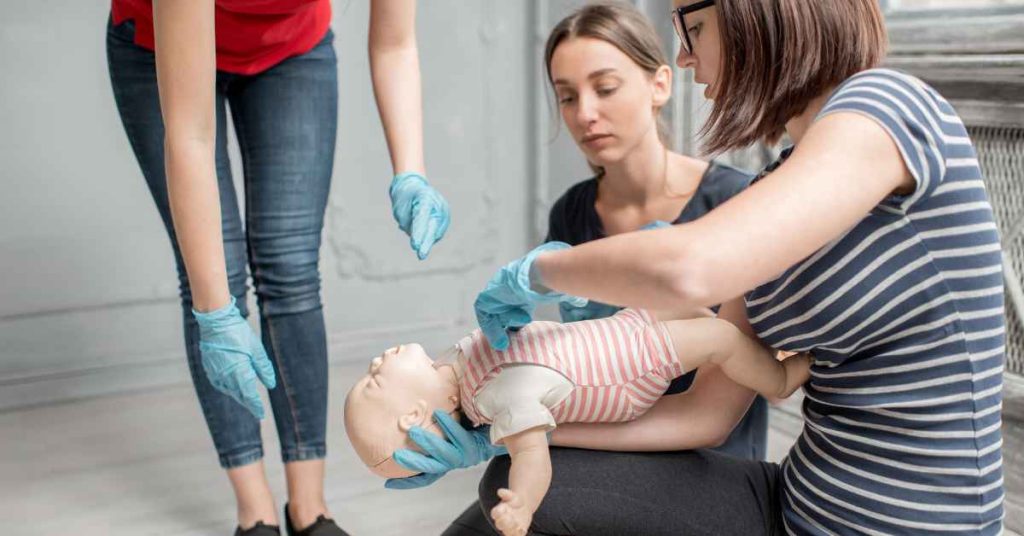
The importance of pediatric first aid cannot be overstated. In the unpredictable world of a child, accidents and emergencies are not just possibilities, they are inevitable. As parents and caregivers, having the skills and knowledge to respond effectively to these situations can make a significant difference in outcomes.
Whether it’s a minor scrape or a more serious emergency, understanding how to provide first aid to children is not just a valuable skill—it’s an essential one. Through real-life anecdotes and startling statistics, this introduction will highlight why learning pediatric first aid is an indispensable part of parenting and caregiving.
Understanding the Basics of Pediatric First Aid
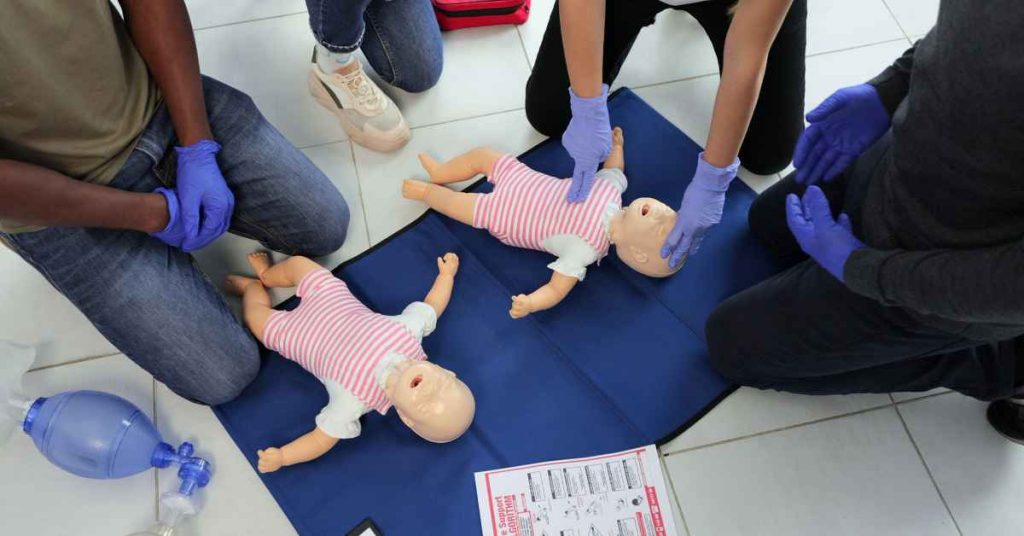
Understanding the basics of pediatric first aid is the cornerstone of effective caregiving in emergency situations. The physiological and developmental differences between children and adults necessitate a distinct approach to first aid.
Children’s smaller bodies, more delicate anatomical structures, and varying levels of understanding and communication skills mean that what works in adult first aid may not be appropriate for a child. Furthermore, the types of emergencies commonly encountered with children, such as choking, falls, and burns, often require specific knowledge and a gentle touch.
Choking Hazards and Intervention
Choking is a frightening and potentially life-threatening emergency, especially in children, and it remains one of the most common hazards in the pediatric age group. Understanding and identifying the various choking hazards that are specific to different age groups is a critical skill for any parent or caregiver.
Babies and toddlers, for instance, are at a higher risk due to their natural curiosity and tendency to explore the world orally. Older children, while more aware, can still choke on certain foods and small objects.
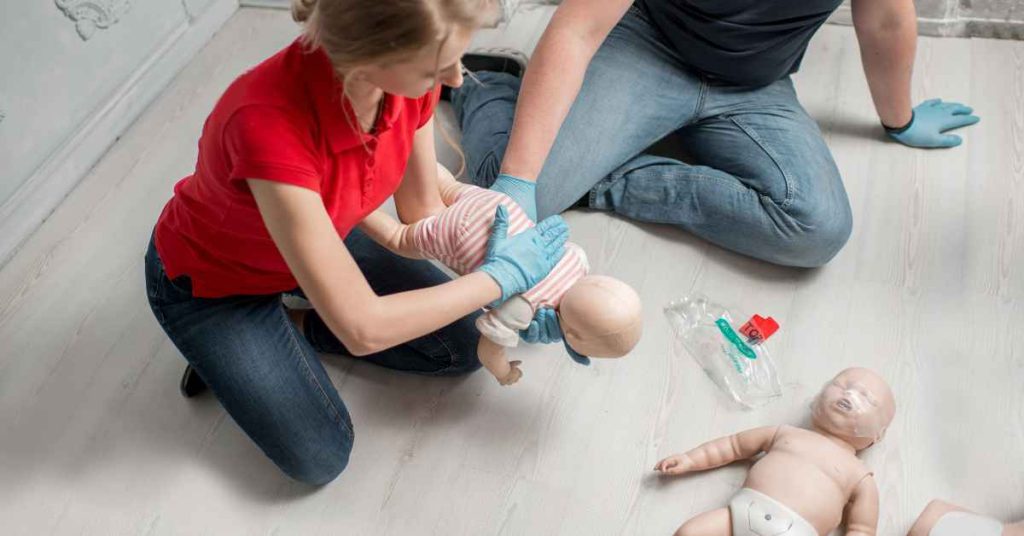
Choking Hazards for Infants (0-12 months):
- Small objects, toys with detachable parts, and round-shaped food items.
- Emphasis on constant supervision and avoiding high-risk items.
Choking Hazards for Toddlers (1-3 years):
- Foods like grapes, nuts, and hard candies; small household items.
- Importance of cutting food into appropriate sizes and child-proofing environments.
Choking Hazards for Older Children (4 years and up):
- Risks from toys with small parts, certain hard or sticky foods, and non-food items (e.g., balloons).
- Teaching children about the dangers of putting non-food items in their mouths.
Step-by-Step Guide for Choking Intervention:
- Assessing the situation: Recognizing signs of choking and differentiating between mild and severe cases.
- Intervention for mild choking: Encouraging the child to cough, staying calm, and monitoring their condition.
- Intervention for severe choking in infants: Performing back blows and chest thrusts.
- Intervention for severe choking in older children: Using the abdominal thrusts.
- When to call emergency services: Understanding when to seek immediate medical help.
Dealing with Cuts and Bruises
Cuts and bruises are common injuries in children, often resulting from their playful and adventurous activities. As a parent or caregiver, it’s important to know how to effectively assess and manage these injuries. The severity of a cut or bruise can range from minor, which can be treated at home, to severe, requiring professional medical attention.
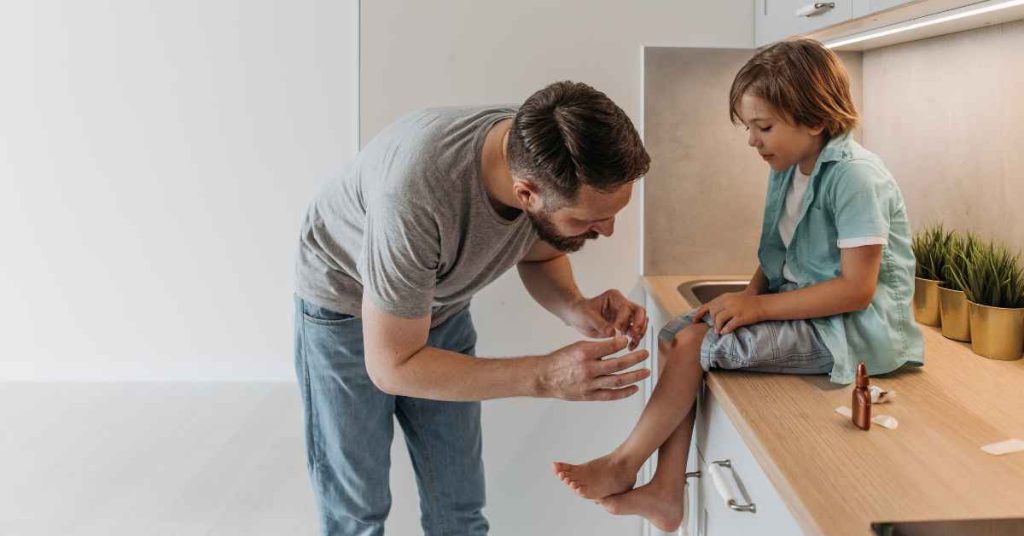
Assessing the Severity of Cuts:
- Look for signs of deep cuts, such as excessive bleeding, visible layers of fat or muscle, or if the cut is wide or long.
- Consider the location of the cut; cuts on certain parts of the body, like the face, may need medical attention for proper healing.
Assessing the Severity of Bruises:
- Note the size and color of the bruise; large or unusually dark bruises might require medical attention.
- Watch for signs of a more serious injury, like extreme pain, swelling, or if the bruise is on a joint or head.
First Aid Steps for Minor Cuts:
- Clean the wound gently with water and mild soap.
- Apply gentle pressure with a clean cloth to stop any bleeding.
- Use an antibiotic ointment and cover with a sterile bandage.
First Aid Steps for Minor Bruises:
- Apply a cold compress to the area for about 20 minutes to reduce swelling.
- Keep the injured area elevated if possible.
- Provide over-the-counter pain relief if necessary, following appropriate dosage for the child’s age and weight.
Managing Burns and Scalds
Burns and scalds are among the more serious injuries that children can sustain, often occurring in the home environment. It’s vital for parents and caregivers to understand the types of burns that are most common in children and how to manage them effectively. Children are most frequently exposed to thermal burns from hot liquids, steam, or direct contact with hot objects, and scalds from hot liquids like bath water or spilled beverages.
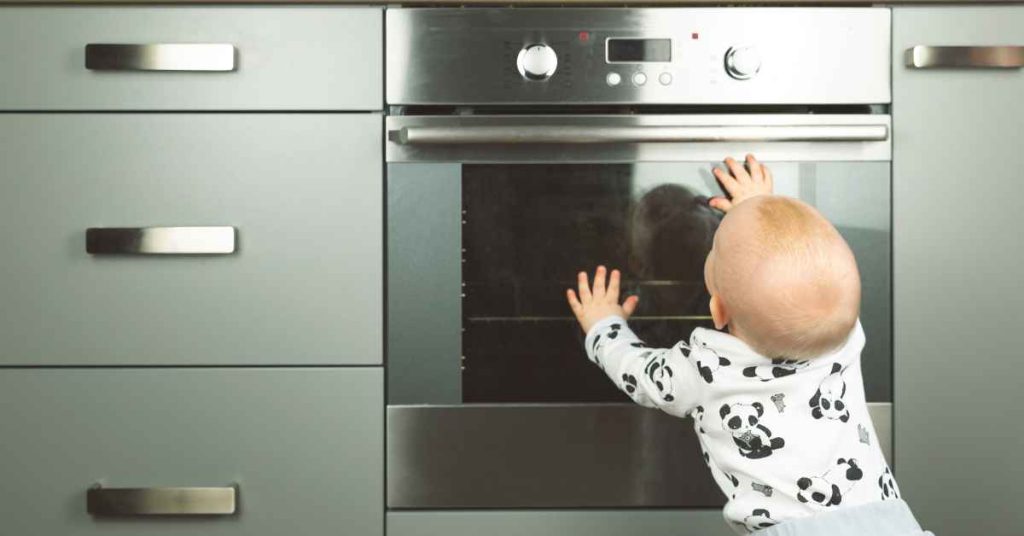
Common Types of Burns in Children:
- The most common burns: Caused by contact with hot objects like stove tops, irons, or hair styling tools.
- Scalds: Resulting from hot liquids or steam, common in kitchen accidents or overly hot bath water.
Immediate Steps for Managing Minor Burns:
- Cool the burn: Run cool (not cold) water over the burn for several minutes.
- Remove any clothing or jewelry near the burn site, if not stuck to the skin.
- Cover the burn: Use a clean, dry cloth or a sterile non-adhesive bandage.
- Do not use ice or extremely cold water, as this can cause further tissue damage.
- Avoid applying butter, oils, or ointments, which can retain heat and worsen the burn.
- Do not break blisters, as this increases the risk of infection.
When to Seek Urgent Medical Attention:
- If the burn is larger than the size of a 50c piece or if it is on the face, hands, feet, or genitals.
- For signs of a more serious burn, like white or charred skin.
- If the child is in severe pain or there are signs of shock (like paleness, weakness, or fainting).
Recognising and Responding to Allergic Reactions
Allergic reactions in children can range from mild to life-threatening and can occur unexpectedly, often triggered by common allergens. Being able to recognise and respond swiftly to these reactions is essential for every parent and caregiver. Children may encounter allergens through food, insect stings, medications, or environmental factors.
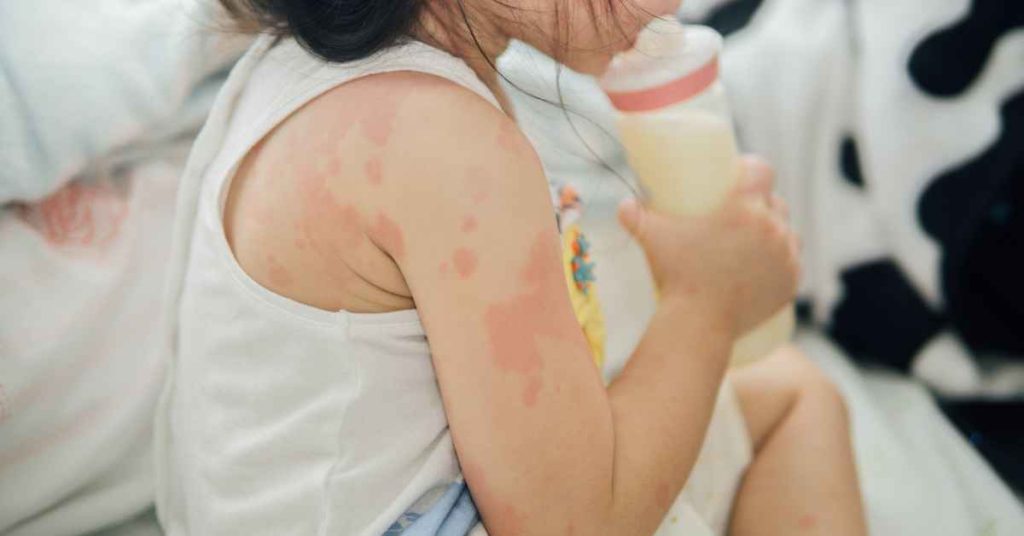
- Foods: Nuts, eggs, milk, soy, and shellfish are frequent triggers.
- Insect stings: Bees, wasps, and certain ants.
- Medications: Antibiotics or over-the-counter drugs.
- Environmental factors: Pollen, animal dander, and dust mites.
Identifying an Allergic Reaction:
- Mild symptoms: Hives, itching, mild swelling, and nasal congestion.
- Severe symptoms: Difficulty breathing, swelling of the tongue or throat, wheezing, and dizziness.
- Anaphylaxis signs: A severe, potentially life-threatening reaction that requires immediate medical attention.
Immediate Care for Allergic Reactions:
- For mild reactions: Administer antihistamines as per the child’s age and size.
- For severe reactions: Use an epinephrine auto-injector if available and seek emergency medical help immediately.
- Monitor the child closely: Even after administering medication, as symptoms can return.
- Do not wait to administer epinephrine if symptoms of anaphylaxis are present.
- Avoid giving oral medications to a child having difficulty breathing or swallowing.
- Do not leave the child alone; constant monitoring is essential.
- Be aware of the child’s known allergens and avoid exposure.
- Educate the child, if age-appropriate, about their allergens and the importance of avoidance.
- Keep an emergency action plan and ensure quick access to medications like antihistamines and epinephrine auto-injectors.
CPR for Infants and Children
Cardiopulmonary Resuscitation (CPR) is a life-saving technique that is crucial in emergencies like drowning, suffocation, or cardiac events. Knowing how to perform CPR on infants and children is particularly important, as the procedure differs significantly from adult CPR. Young children and infants have different anatomical structures and require gentler techniques.
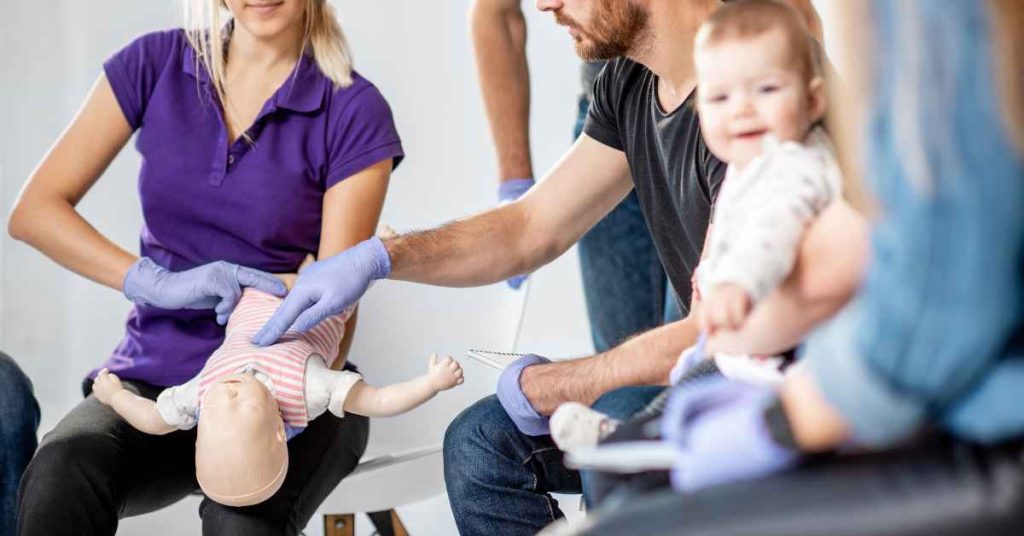
Importance of CPR for Different Age Groups:
- Unique anatomical and physiological considerations in infants and children.
- Higher likelihood of respiratory issues leading to cardiac arrest in these age groups.
CPR Steps for Infants (Under 1 Year):
- Safety check: Ensure the environment is safe for both the rescuer and the infant.
- Check responsiveness: Gently tap or shake the infant and shout for a response.
- Call for help: If there’s no response, instruct someone to call emergency services or call them yourself.
- Chest compressions: Use two fingers to perform gentle compressions at the center of the chest.
- Rescue breaths: Give two gentle breaths, covering the infant’s mouth and nose with your mouth, with the head in a neutral position.
CPR Steps for Children (1 Year to 8 years):
- Safety and responsiveness checks, similar to infants.
- Call for emergency help.
- Chest compressions: Use one or two hands (depending on the child’s size) to compress the chest.
- Rescue breaths: Tilt the head back, lift the chin, and give two breaths, ensuring the chest rises with each breath.
- Depth and force of chest compressions.
- Method of giving rescue breaths (especially for infants).
- Ratio of chest compressions to rescue breaths may vary.
Regular Training and Certification:
- Importance of taking CPR classes regularly to stay updated with the latest guidelines.
- Practicing under certified instructors to ensure correct techniques.
Fever and Illness Management
Fever and common illnesses are frequent occurrences in childhood, often causing concern for parents and caregivers. Understanding when a fever is problematic and how to manage common illnesses at home is a crucial aspect of pediatric care.
A fever, while sometimes alarming, is the body’s natural response to fighting infections. However, it’s important to recognise when it indicates something more serious. Additionally, managing common illnesses such as colds, flu, stomach bugs, and ear infections requires both knowledge and attentiveness.
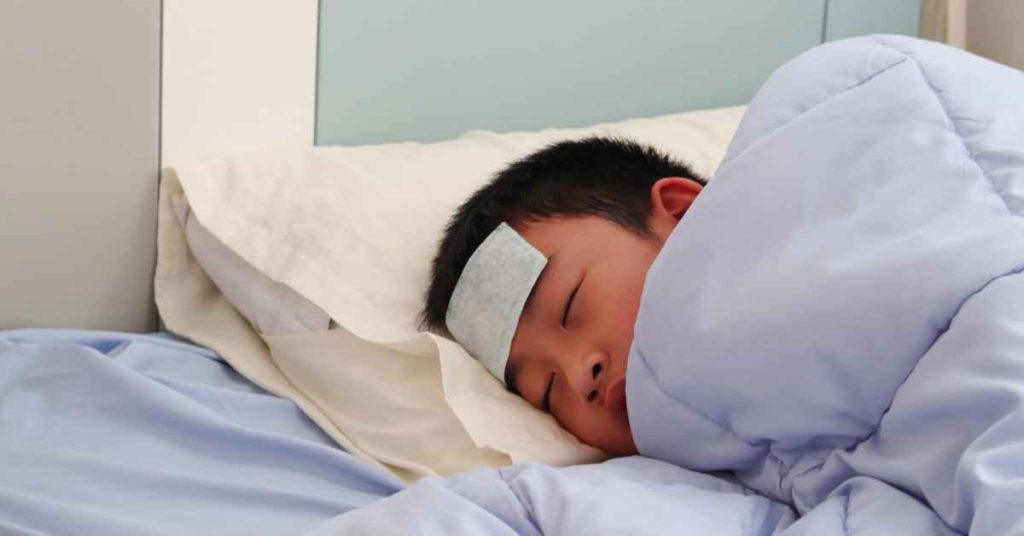
Understanding Fever in Children:
- Recognize when a fever is a concern: In infants under 3 months, a fever over 100.4°F (38°C) warrants immediate medical attention.
- For older children, high fevers above 102°F (39°C), fevers lasting more than three days, or any fever accompanied by symptoms like lethargy, rash, or difficulty breathing require medical evaluation.
- Monitoring fever patterns and associated symptoms for better assessment.
Tips for Managing Fever at Home:
- Keep the child hydrated: Offer plenty of fluids to prevent dehydration.
- Dress the child in light clothing and use a light blanket if needed.
- Use fever-reducing medications like paracetamol or ibuprofen, following the appropriate dosage for the child’s age and weight.
Managing Common Illnesses at Home:
- Cold and Flu: Rest, hydration, and saline nasal drops for congestion.
- Stomach Bugs: Gradual reintroduction of bland foods, hydration with electrolyte solutions.
- Ear Infections: Warm compresses for pain relief; some may require medical attention for antibiotic treatment.
When to Seek Professional Help:
- Persistent high fever or worsening symptoms.
- Signs of dehydration like dry mouth, no tears when crying, or reduced urine output.
- Any unusual symptoms like severe headache, stiff neck, persistent vomiting, or skin rash.
Preventative Measures and General Care:
- Emphasize good hygiene practices to prevent the spread of illness.
- Ensure routine vaccinations are up-to-date.
- Regular health check-ups and maintaining a balanced diet for overall health.problematic
Want more? We’ve got you covered…
Our Baby First Aid Courses
Our baby first aid courses are available in person in your home and online. We run classes in your home with groups of 2, 4 or up to 10 in Sydney & Melbourne and you can book in 3 easy steps!
- Pick your class
- Follow the prompts to purchase
- We will contact you within 24 hours to lock in your date of choice
Our First Aid Certificate Courses
We run most of the popular first aid courses Australia wide. HLTAID011 Provide First Aid, HLTAID009 Provide CPR, HLTAID012 Provide First Aid in an Education & Care Setting, RAMOAP (anaphylaxis), Mental Health first aid and CPR/LVR to name a few.
Book your public spot online or contact us if you have a group of 5+ people for onsite training.
Here are some other resources you may enjoy!
FREE GUIDE: Your Virtual Baby First Aid Kit
FREE GUIDE: Introducing Common Allergy Foods & Allergic Reactions
FREE Workplace Emergency Preparedness Plan: Grab this at the bottom of every page!
Follow for baby & child first aid and allergy info and tips on Instagram, TikTok & Facebook all @thenestcpr

